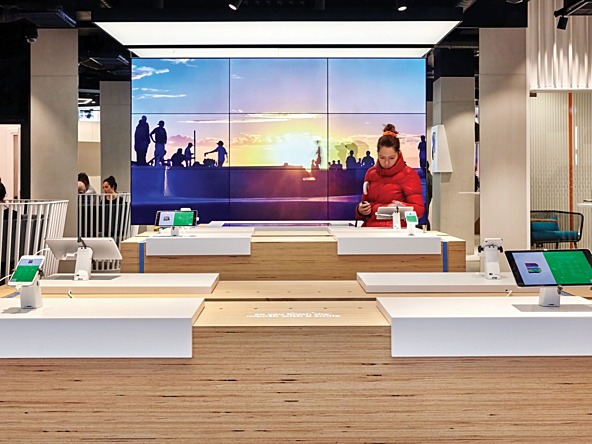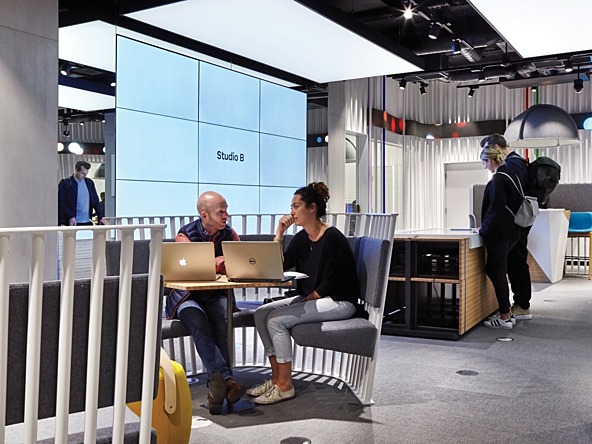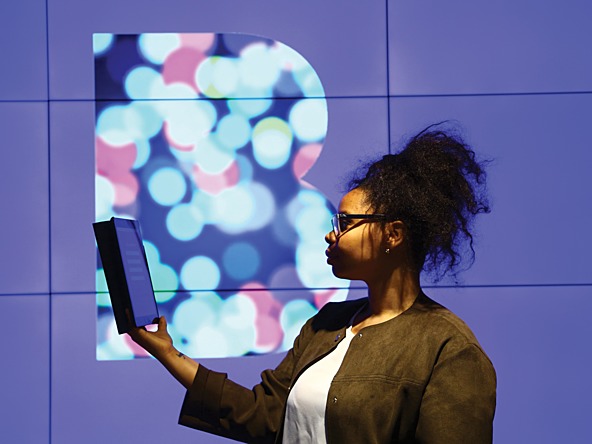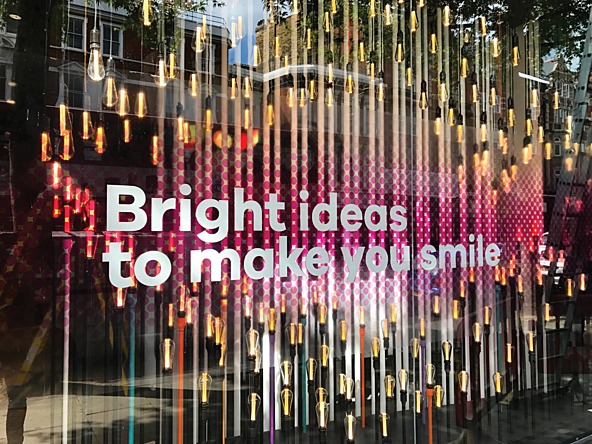New transaction

Like any other bank post-2008, Clydesdale Yorkshire Banking Group (CYBG) is no stranger to a challenge.
Formed of two constituent brands, Clydesdale and Yorkshire, CYBG became independent from the National Australia Bank after its initial public offering (IPO) in February 2016, and swiftly turned its attention to digital. The company had a problem, however: its two legacy brands were bleeding customers. A loyal base of older customers was dwindling, and it wasn’t attracting new ones.
“Our customer base was ageing and declining. We had to do quite a bit of work thinking about how to use younger audiences, who are somewhat picky about what banks they select,” says Helen Page, group innovations and marketing director at CYBG.
Not only did CYBG need to learn more about its current customers, but – against a backdrop of radically changing behaviour around finance – it also wanted to tap into a younger customer base and attract millennials. The group would need to appeal to a new and increasingly discerning set of consumers, with different priorities and attitudes from those of the past.
Customer insight has been central to this transformation. The company built its stand-alone digital banking brand, B, as part of its response to the insights gathered from extensive research with 10,000 customers. This study was supported by Leeds-based RDSi and helped CYBG build what it views as a new approach to banking.
Instead of the traditional method of creating a new proposition with trials and focus groups, explains Page, CYBG started from scratch, and asked customers to share their frustrations and concerns around banking.
“What we didn’t do was build something and then test it. We started from a blank piece of paper and asked people ‘what do you want a bank to do for you?’ Problems, concerns, fears with money – and we built B from that.”
The research – comprising qualitative, quantitative, conjoint and testing with the group’s existing user base – unearthed one key insight: banks hold a lot of data on people that could be, but isn’t, used to help them manage and control their money better. In addition, the experience consumers have with lifestyle platforms and services – and that they now expect from their interactions with brands – was not being replicated in banking. So CYBG set about investing in, and building, a digital proposition to service this customer need.
The resulting app-based banking service, B, uses artificial intelligence to analyse and predict spending patterns, allowing users to exert more control over their finances. Such control is particularly pertinent to younger consumers. Despite media representation of millennials as feckless spendthrifts, on the whole they are discerning, risk-averse people, who prefer to map out their lives with the help of technology.
A recent study by Foresight Factory, for example, found that more than half ( 58%) of millennials were interested in services that help them calculate their future financial situation.
It was important for CYBG to test the app with customers on a regular basis throughout the iteration process, rather than just at the initial phase, says Page. “We brought customers in on a regular basis to user test with us, asking them what features they liked. We iterated over a period of months to get to the final offering.”

While CYBG implements all the research one would expect for a company of its size – a net promoter score (NPS) survey, plus qualitative and quantitative work – its focus now is on “big insights”, adds Page.
As a result, it started to look at transactional data in a different way – from a behavioural perspective – to develop a solution to help customers understand their spending better.
The app is able to tell people whether they will be ‘in the red’ in two weeks’ time, or have enough money left to spend, based on their transactional history with the bank – including when their salary is paid and what bills they have on a regular basis.
“Based on the frequency and patterns of your spend, we can tell you whether you should slow down or whether you’re going to be OK,” says Page. “We’ll alert you before you go overdrawn. It’s about having that constant interaction – that constant support in your pocket, if you like.”
This sounds useful in theory, but isn’t it a bit overbearing for a bank to be telling its customers to stop spending?
Page stresses that users are in control of how much interaction – such as alerts – they want to have, and what information they receive. “We’re not on your back, but a customer pain point was, ‘you have all this data about me and you’re not using it to help me reach financial control’.
“It has to be their choice. Some customers love looking at their data and some never want to see a bank statement again. They can’t decipher them – that’s why the app is set up in a very particular way. Previously, you would have seen a long list of transactions on a statement that wouldn’t have told you very much.” For example, by looking at transactional data it identifies total cash withdrawals, repeated purchases and predictions of overspending.
CYBG isn’t the first to build an app that helps users control and track their spending. The personal finance industry is undergoing major disruption, particularly from new players such as mobile banking start-up Monzo. However, the B app differs because it offers an integrated solution, says Page, as opposed to a stand-alone money tracker. “You’ve got lots of digital players coming onto the scene, but this is a fully integrated bank and savings account.”
B users can also manage their accounts by visiting any Clydesdale or Yorkshire branch, while existing bank customers – who also have a B account – can use the app to manage all of their accounts.

Physical meets digital
While the group has focused much of its attention on digital, its history as a legacy brand is rooted in physical branches, with Yorkshire and Clydesdale banks a stalwart of town centres across Scotland and the north of England.
Although like almost every other high street bank brand, it has reduced its branches, insight from the bank’s customer research indicated that people want a continued bricks-and-mortar presence, in addition to online services.
“Customers still want a high street presence,” says Page. “They don’t need it in the way they used to, but they still want it – so we’ve got the beauty of having both. When you want to see us face to face, you can.
“We can be on your high street, in your communities and support your local businesses in a very different way from a new digital player who doesn’t have a physical presence.”
It was perhaps this insight that helped to inform CYBG’s decision to take the B brand one step further, by going back to its roots – the high street – albeit in a different guise.
The company opened its Studio B branch on Kensington High Street earlier this year. Described as a ‘customer lab’, it more closely resembles a high-spec, well-designed retail store than a typical bank. As well as offering the usual banking services, the space allows CYBG to interact with customers to “design the next generation of banking”, says Page. Facial-recognition technology is used to read people’s expressions in-store, while their bank balances can be checked using Amazon Alexa voice commands.
In this way, CYBG is extending beyond its customer base and interacting with people in ways that traditional market research methods might not allow. There’s a willingness among younger consumers to share and openly discuss their financial issues – perhaps more readily than previous generations of customers have been – to inform and design a service that fits their needs better. Page describes the process as “co-creation”.

Since the initial launch in London, the Studio B concept has been rolled out to Birmingham, where a new store opened in September 2017. In addition, Clydesdale Bank’s flagship store in Edinburgh has been used to trial new technologies; it has worked with Mastercard to test robot capability in-store.
Page believes it’s “not about data”, but rather about the insights that should be informed by talking to customers, testing campaigns and propositions. “We want to work with customers in a very different way,” she says. “I’m very keen for it not to feel like a traditional bank. It’s about building things that customers said they needed, as opposed to the other way around.”
It’s not just customers that CYBG is looking to for insights in its approach to innovation. Historically, banks have been insular and resistant to collaboration, but Page acknowledges CYBG is under threat from several players. As a result, it constantly looks outside of the business and the industry to unearth findings that could help develop future digital propositions.
For instance, the company recently looked to a Spotify study that suggested people’s music tastes are very defined by the age of 33. CYBG started thinking about how people’s choices about banking – around mortgages or saving, for example – might be predetermined by a specific age or life stage.
“It’s about applying some of the stuff we learn from other sectors to how we communicate with customers – and engage and build propositions for them. It has been fascinating to learn from other industries about how they use insights in a very different way,” says Page.
The group is also working with Amazon and its Alexa voice recognition, specifically how the technology can be used to simplify payments.

Future focus
Millennial customers may want the convenience, simplicity and modernity of a digital experience, but Page says they still turn towards traditional banks when it comes to life’s bigger moments such as taking out a mortgage.
So CYBG has launched a ‘B@Home’ app that helps users plan and budget for their first home. The aim is simplicity. “[We want to make it] easier, quicker, more like something you do in your everyday life, rather than it being drudgery to buy a house or remortgage,” she says.
Page is pragmatic about the role good customer experience – across channels – must play if the bank is to stay relevant in the experience economy we now live in. “People buy things in such a different way now. We’re more choosy, we’re less loyal, we’re prepared to pay more for something if we get a better experience,” she says.
“In the past, it was all about the cheapest – it’s now more about the customer experience. If I want to have a better experience with a brand, I’m prepared to pay for it.
“People talk about not wanting to pay a monthly fee for banking, but then they pay an extortionate amount for Amazon Prime, or to have something delivered the same day in a way that, years ago, you wouldn’t have considered. It all comes back to the experience.”
Interview by Bronwen Morgan, written by Katie McQuater

We hope you enjoyed this article.
Research Live is published by MRS.
The Market Research Society (MRS) exists to promote and protect the research sector, showcasing how research delivers impact for businesses and government.
Members of MRS enjoy many benefits including tailoured policy guidance, discounts on training and conferences, and access to member-only content.
For example, there's an archive of winning case studies from over a decade of MRS Awards.
Find out more about the benefits of joining MRS here.













0 Comments